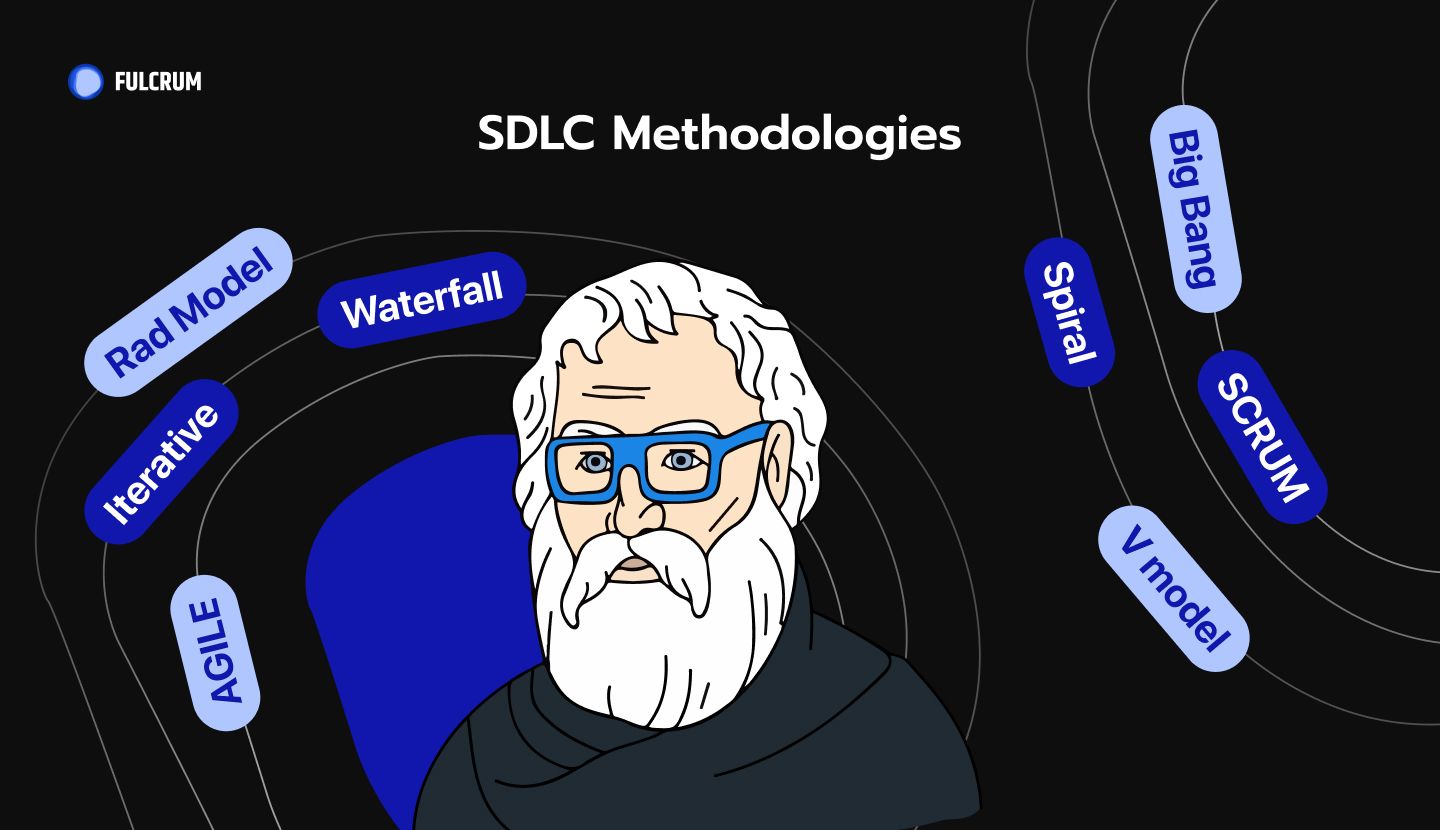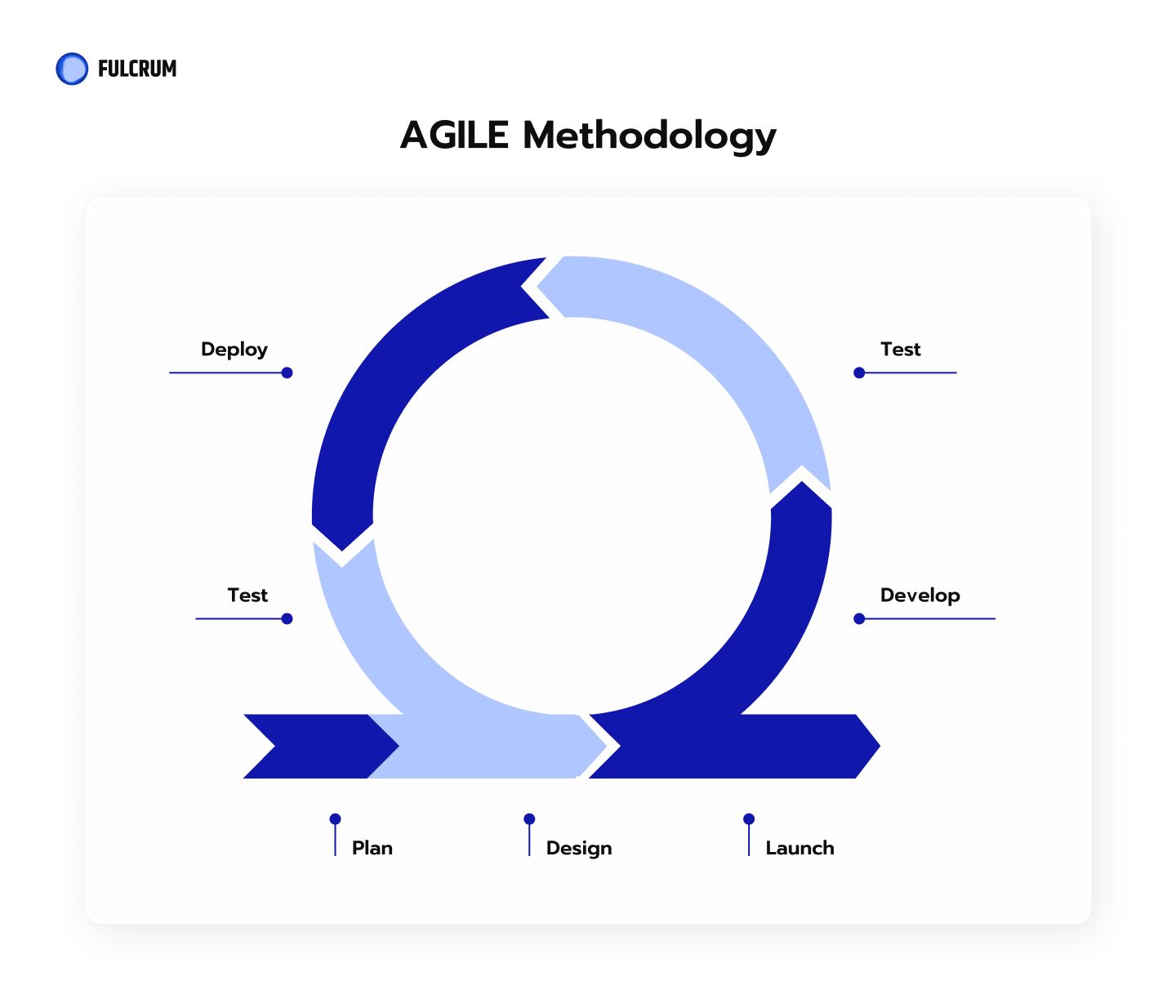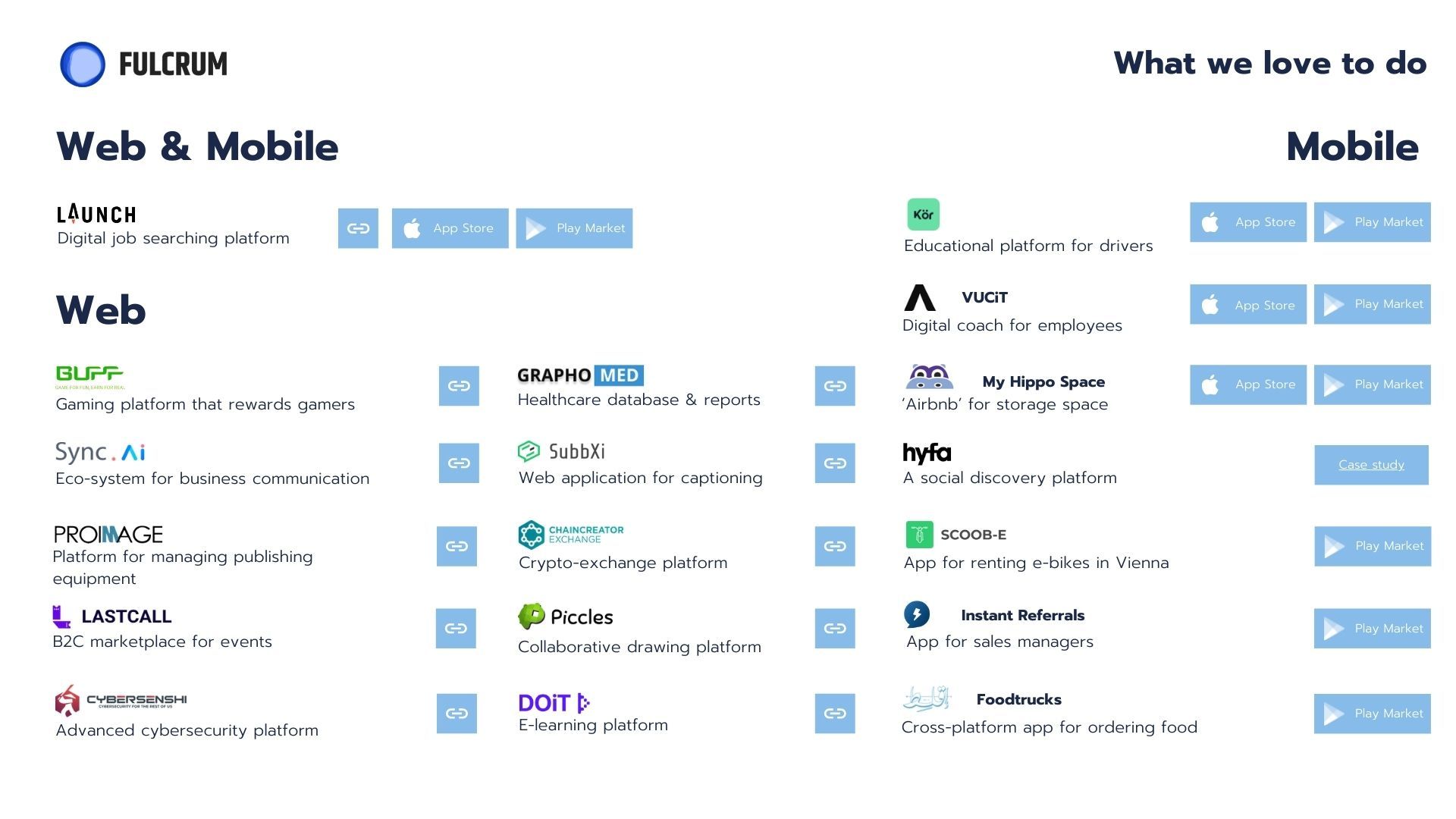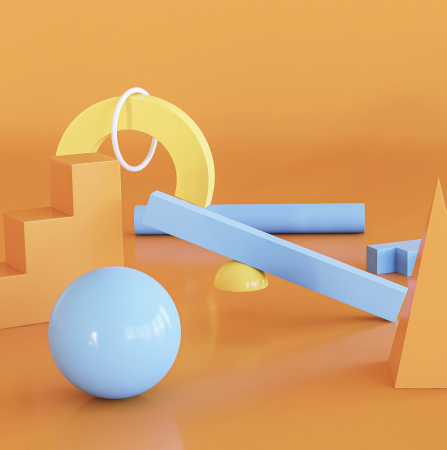In software development, nothing happens by accident. Only well-managed projects achieve cool results.
Don’t wanna your project to eat too much of your resources? Take care about optimal Software Development Methodology!
The SDLC model is a structure that defines actions for developing, utilizing, and maintaining a software product. There are multiple SDLC models, and all of them divide into 3 main groups:
- those based on an engineering approach;
- those which focus on the specifics of the task;
- those based on modern technologies of rapid development.

10 popular types of SDLC models:
- Waterfall
- Agile
- V model
- Iterative
- Spiral
- Scrum
- Extreme Programming
- Rad Model
- Software Prototype
- Big Bang
For the Fulcrum projects, we preferably choose the first two models, namely, Waterfall and Agile. Understanding the strong and weak sides of both models will give you a glimpse of how our team handles tasks in the development process.
SDLC Waterfall Model
In the SDLC waterfall model, the development stages depend on each other and the next one begins as soon as the previous is finished. The name comes from the compassion to the progressive (waterfall) forward movement.
In other words, the development process of this model is an ordered sequence of independent steps. Each team from their phase is clearly responsible for its stage. They have no need to communicate tightly in order to complete their tasks.
Read more: The Ultimate Guide to Understanding Software Development Life Cycle
When Using a Waterfall Model Is Most Effective?
- Projects have clear and unchanged requirements, a clear life cycle, and technical methods.
- Projects are focused on building analog software as previously developed by the team.
- Projects are related to releasing a new version of the existing product or system.
- Projects are related to transferring the existing product or system to a new platform.
- A project is large and involves more than one development team.

Advantages of waterfall model:
- Main requirements do not change throughout the entire development cycle.
- It’s easy to form the project documentation.
- Each step is clearly defined and easy to apply.
- Clients and the team see a logical sequence of stages. This allows us to set the approximate timing and evaluate the number of used resources (costs, instruments, the number of employees).
Drawbacks of waterfall model:
- It’s tough to scale the project or make changes during the cycle.
- Low flexibility in project management;
- Returning to the previous steps to solve emerging issues can be cost-ineffective.
- Users do not have the ability to assess the quality of the product until the project gets finished.
Agile Model SDLC
This model implies a set of agile software development principles and ideas (12 in total).

The Key Agile Ideas are:
- Human interaction is more important than processes and tools.
- The product itself is more important than comprehensive documentation.
- Communication with the customer is more important than the terms of the contract.
- Being ready for change is more important than following the original plan.
The interaction principle allows both sides to exchange experiences between team members and the client, as well as participate in decision-making. This approach reduces the risks of wasting time and money and increases the ability to solve complex uncertain tasks.
The best projects for Agile are those with a high degree of complexity and uniqueness.
In the agile methodology, clients can observe the result in each of the iterations, meaning they can have a better understanding of what the future product would look like. Unlike the waterfall model, the agile-based project does not require strict planning at the start.
When Using an Agile Model Is Most Effective?
- Large or long-term projects that are constantly adapting to market conditions (like Kör).
- When user needs are constantly changing in a dynamic business ( check Buff case study).
- When the project owner is very creative and one’s vision is constantly changing ( Hyfa case study)
 Projects we've built with Agile Software Development Methodology
Projects we've built with Agile Software Development Methodology
Pick the Right Software Development Methodology to Grow Your Business
There is always a place for diversity. Each methodology has its strengths and weaknesses and works effectively in different situations.
Higher speed, flexibility, and productivity are the key drivers which motivate more and more organizations to switch to Agile. But! Depending on your business requirements and goals, you might still benefit from using the Waterfall model.
The Fulcrum team is always ready to help you decide what SDLC model to choose and which is more important to help you succeed.

FAQ: Software Development Methodologies
-
What are software development methodologies?A software development methodology is an approach to product development by which an engineering team will build a given product.
-
What type of software development lifecycle methodologies have you?Most software development teams use either Agile or Waterfall methodologies. Fulcrum Rocks is no exception.


